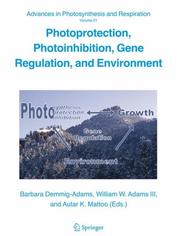| Listing 1 - 8 of 8 |
Sort by
|
Book
Year: 1923 Publisher: Washington Government Printing Office
Abstract | Keywords | Export | Availability | Bookmark
 Loading...
Loading...Choose an application
- Reference Manager
- EndNote
- RefWorks (Direct export to RefWorks)

ISBN: 0821838040 9780821838044 Year: 1994 Volume: 3 Publisher: Providence (R.I.): American Mathematical Society
Abstract | Keywords | Export | Availability | Bookmark
 Loading...
Loading...Choose an application
- Reference Manager
- EndNote
- RefWorks (Direct export to RefWorks)
Book
ISBN: 9781470411398 Year: 1994 Publisher: Providence, R.I. American Mathematical Society
Abstract | Keywords | Export | Availability | Bookmark
 Loading...
Loading...Choose an application
- Reference Manager
- EndNote
- RefWorks (Direct export to RefWorks)
Book
ISBN: 1470411393 Year: 1994 Publisher: Providence, Rhode Island : American Mathematical Society,
Abstract | Keywords | Export | Availability | Bookmark
 Loading...
Loading...Choose an application
- Reference Manager
- EndNote
- RefWorks (Direct export to RefWorks)
Book
ISBN: 0134912829 Year: 1976 Publisher: Englewood Cliffs (N.J.): Prentice Hall
Abstract | Keywords | Export | Availability | Bookmark
 Loading...
Loading...Choose an application
- Reference Manager
- EndNote
- RefWorks (Direct export to RefWorks)
Number theory --- 511.2 --- Number study --- Numbers, Theory of --- Algebra --- 511.2 Elementary number theory --- Elementary number theory

ISBN: 1280624302 9786610624300 1402035799 1402035640 1402092814 Year: 2006 Publisher: Dordrecht : Springer,
Abstract | Keywords | Export | Availability | Bookmark
 Loading...
Loading...Choose an application
- Reference Manager
- EndNote
- RefWorks (Direct export to RefWorks)
Photoprotection, Photoinhibition, Gene Regulation, and Environment examines the processes whereby plants monitor environmental conditions and orchestrate their response to change, an ability paramount to the life of all plants. "Excess light", absorbed by the light-harvesting systems of photosynthetic organisms, is an integrative indicator of the environment, communicating the presence of intense light and any conditions unfavorable for growth and photosynthesis. Key plant responses are photoprotection and photoinhibition. In this volume, the dual role of photoprotective responses in the preservation of leaf integrity and in redox signaling networks modulating stress acclimation, growth, and development is addressed. In addition, the still unresolved impact of photoinhibition on plant survival and productivity is discussed. Specific topics include dissipation of excess energy via thermal and other pathways, scavenging of reactive oxygen by antioxidants, proteins key to photoprotection and photoinhibition, peroxidation of lipids, as well as signaling by reactive oxygen, lipid-derived messengers, and other messengers that modulate gene expression. Approaches include biochemical, physiological, genetic, molecular, and field studies, addressing intense visible and ultraviolet light, winter conditions, nutrient deficiency, drought, and salinity.
Photosynthesis. --- Genetic regulation. --- Life sciences. --- Biochemistry. --- Plant biochemistry. --- Cell biology. --- Plant ecology. --- Plant science. --- Botany. --- Plant physiology. --- Life Sciences. --- Biochemistry, general. --- Plant Sciences. --- Plant Ecology. --- Plant Biochemistry. --- Plant Physiology. --- Cell Biology. --- Botany --- Plants --- Physiology --- Botanical science --- Phytobiology --- Phytography --- Phytology --- Plant biology --- Plant science --- Biology --- Natural history --- Ecology --- Cell biology --- Cellular biology --- Cells --- Cytologists --- Phytochemistry --- Plant biochemistry --- Plant chemistry --- Biochemistry --- Phytochemicals --- Plant biochemical genetics --- Biological chemistry --- Chemical composition of organisms --- Organisms --- Physiological chemistry --- Chemistry --- Medical sciences --- Biosciences --- Sciences, Life --- Science --- Composition --- Gene expression --- Gene expression regulation --- Gene regulation --- Biosynthesis --- Cellular control mechanisms --- Molecular genetics --- Photobiology --- Gases from plants --- Regulation --- Effect of light on --- Photorespiration --- Cytology. --- Phytoecology --- Vegetation ecology --- Floristic botany --- Floristic ecology
Digital
ISBN: 9781402035791 Year: 2006 Publisher: Dordrecht Springer
Abstract | Keywords | Export | Availability | Bookmark
 Loading...
Loading...Choose an application
- Reference Manager
- EndNote
- RefWorks (Direct export to RefWorks)
Histology. Cytology --- General ecology and biosociology --- Plant physiology. Plant biophysics --- Biochemical engineering --- systematische plantkunde --- biochemie --- cytologie --- histologie --- planten
Book
ISBN: 9781402035791 Year: 2006 Publisher: Dordrecht Springer
Abstract | Keywords | Export | Availability | Bookmark
 Loading...
Loading...Choose an application
- Reference Manager
- EndNote
- RefWorks (Direct export to RefWorks)
Photoprotection, Photoinhibition, Gene Regulation, and Environment examines the processes whereby plants monitor environmental conditions and orchestrate their response to change, an ability paramount to the life of all plants. "Excess light", absorbed by the light-harvesting systems of photosynthetic organisms, is an integrative indicator of the environment, communicating the presence of intense light and any conditions unfavorable for growth and photosynthesis. Key plant responses are photoprotection and photoinhibition. In this volume, the dual role of photoprotective responses in the preservation of leaf integrity and in redox signaling networks modulating stress acclimation, growth, and development is addressed. In addition, the still unresolved impact of photoinhibition on plant survival and productivity is discussed. Specific topics include dissipation of excess energy via thermal and other pathways, scavenging of reactive oxygen by antioxidants, proteins key to photoprotection and photoinhibition, peroxidation of lipids, as well as signaling by reactive oxygen, lipid-derived messengers, and other messengers that modulate gene expression. Approaches include biochemical, physiological, genetic, molecular, and field studies, addressing intense visible and ultraviolet light, winter conditions, nutrient deficiency, drought, and salinity.
Histology. Cytology --- General ecology and biosociology --- Plant physiology. Plant biophysics --- Biochemical engineering --- systematische plantkunde --- biochemie --- cytologie --- histologie --- planten
| Listing 1 - 8 of 8 |
Sort by
|

 Search
Search Feedback
Feedback About UniCat
About UniCat  Help
Help News
News